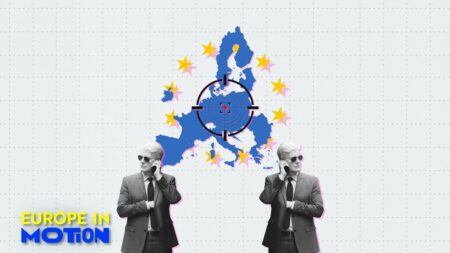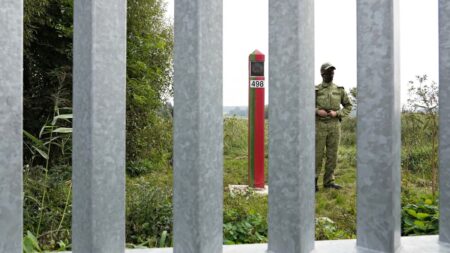Published on
The trade agreement between the European Union and the United States not only has economic and financial implications. It could also have consequences for road safety in Europe. This is the warning issued by NGOs following the joint declaration published last week by the European Commission and Washington.
For cars, the text refers to “mutual recognition” of each other’s standards. However, the European Transport Safety Council (ETSC) points out that safety standards are very different between European and American cars.
“We now have [in the EU] technologies such as automatic emergency braking, pedestrian protection tests and lane keeping assist systems,” explains Dudley Curtis, ETSC communications director.
“These are just three examples of technologies that are mandatory in Europe, but not mandatory in the US.”
Automated Emergency Braking allows the vehicle to brake automatically in an emergency if for some reason the driver is unable to stop the vehicle.
The pedestrian protection standard seeks to limit the extent of an accident when a pedestrian is hit by a car and falls onto the bonnet or windscreen.
Lane Keeping Assist detects road markings such as solid or broken white lines. This device then warns the driver if he unintentionally crosses the line, or even brings him back into his lane.
Message to manufacturers
With this trade agreement, Washington hopes to export more American-standard vehicles to Europe.
But the NGO’s other concern is the effect this compromise will have on manufacturers in Europe. The various manufacturers could be tempted to denounce a situation of unfair competition and criticise European regulations.
“All the other manufacturers, Japanese, Chinese, Korean and European, who produce in Europe, will say: if they [the United States] have to comply only with the American standard and we have to comply with the European standard, that’s not fair, it will create unfair competition”, warns Dudley Curtis.
The risk, he continues, is that “there will be enormous pressure to lower European standards”.
The European Transport Safety Council clarifies that there is no immediate prospect of more American SUVs or pick-ups on European roads. There is a political process to be followed within the EU.
Nevertheless, Dudley Curtis points out that “over the last decade or more, the number of deaths on the roads in the United States has risen, while in Europe it has fallen slowly, but it has still fallen”.
There are a number of factors to be taken into account in this phenomenon, such as the type of road, driver behaviour and drink-driving issues, but safety standards do play an important part in the European results.
Read the full article here

















